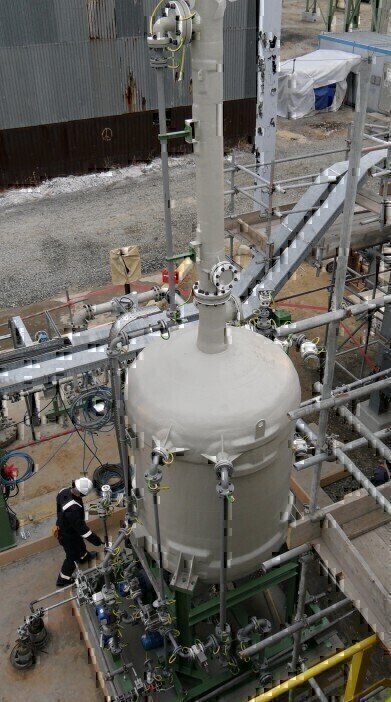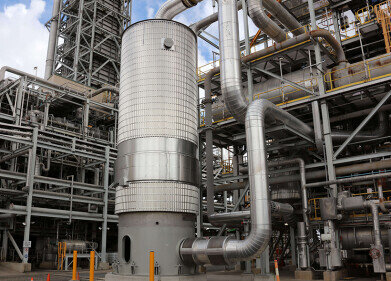Air Clean Up
Acid Fume Treatment Project in Central Asia
Mar 14 2011
ERG (Air Pollution Control) (UK) has completed a £300k project to supply an acid fume scrubber to Kazakhstan. The client is the petrochemical giant, Tengizchevroil, which is a joint venture between Chrevron, Exxon Mobil, and local Kazakh operators KazMunaiGas and LukArco.
The client needed the scrubber to treat hydrochloric acid (HCl) fumes which are given off from a 50m3 storage tank containing concentrated HCl. The normal operating temperature range of the fumes is 20oC to 44oC, but Tengizchevroil specified an operating range for the fume scrubber between -40oC and +75oC to allow for extreme Kazakh weather conditions in addition to an operating margin. To add to the technical challenge, the client also specified that the scrubber should be capable of handling pressures up to 6 atmospheres.
Under normal operation, the concentration of HCl in the extracted fumes is 130,000 ppm, but this can rise to in excess of 500,000 ppm at the extreme operating limits. The ERG designed scrubber reduces the HCl content down to less than 2ppm – an impressive extraction efficiency of more than 99.99%.
The key part of the scrubbing system is a packed tower scrubber. This uses water as a scrubbing liquor to capture the displaced HCl fumes that are expelled as the storage tank is filled.
The scrubber is mounted on a 3.4m3 recirculation tank, and along with a recirculation pump and associated pipe-work, the complete system is supplied on a 304L stainless steel skid. The pump re-circulates the scrub liquor water from the tank to the packed tower. Mains water is supplied to the recirculation tank to make up evaporation losses. To monitor the build up of HCl in the scrubbing liquor, samples are taken by means of a safe sampling valve that can be linked to a conductivity or pH instrument. The unit also allows ambient air to be drawn into the tank as the HCl is drawn off for use.
The cleaned fumes containing <2ppm HCl pass through a pad type demister before being discharged to atmosphere.
The unit was built in the UK adn left in October 2010 on its 4,000+ mile 6-week overland journey across Europe and Russia to the refinery site at Atyrau on the Caspian Sea.
Events
IWA World Water Congress & Exhibition
Aug 11 2024 Toronto, Canada
Aug 25 2024 Stockholm, Sweden and online
Sep 03 2024 Mexico City, Mexico
Sep 03 2024 Mexico City, Mexico
Sep 03 2024 San Diego, CA, USA














